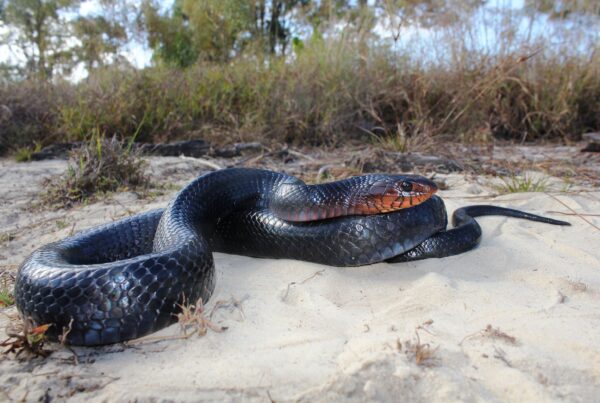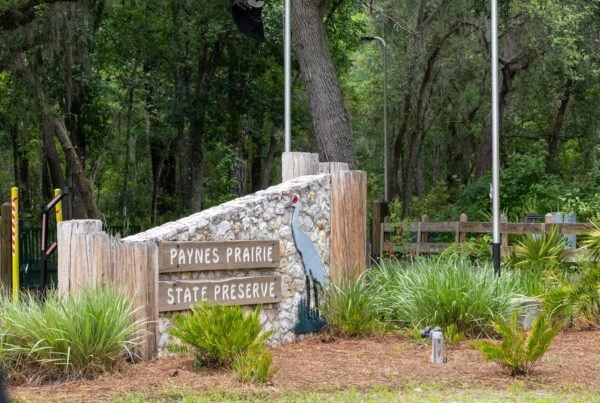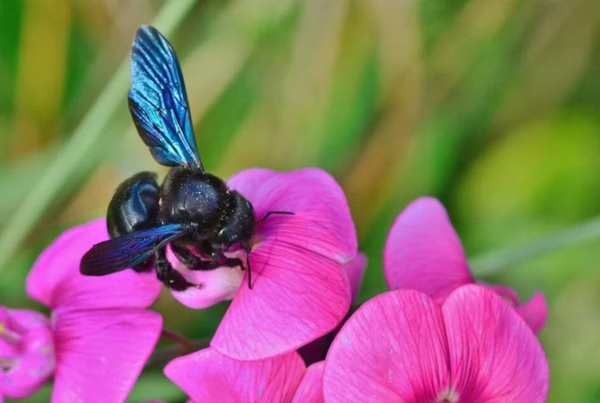The Eastern Collier Multiple Species Habitat Conservation Plan
The Florida panther, with its long-tailed and pale brown fur, is a symbol of wild Florida. This cat once roamed across the entire southeastern United States, but human population growth has, and continues to, destroy, degrade, and fragment their habitat. Today, the U.S. Fish and Wildlife Service (FWS) estimates there may be as few as 120-230 adult panthers left in South Florida.
Why is land conservation so important for the Florida panther?
The Florida panther is a wide-ranging species across Southwest Florida. Public lands (i.e., state and/or federally owned) are insufficient to support a growing panther population. As panther habitat shrinks due to increasing development, the panther’s ability to find prey, mates, and suitable denning sites has declined. Loss of habitat contributes to the two greatest causes of panther death: aggression between panthers and collisions with motor vehicles. Collier County is not immune to population growth. Since growth and development will continue to encroach on panther habitat, the future of this charismatic cat is dependent upon land-use decisions made today.
The Eastern Collier Multiple Species Habitat Conservation Plan
The Florida panther, with its long-tailed and pale brown fur, is a symbol of wild Florida. This cat once roamed across the entire southeastern United States, but human population growth has, and continues to, destroy, degrade, and fragment their habitat. Today, the U.S. Fish and Wildlife Service (FWS) estimates there may be as few as 120-230 adult panthers left in South Florida.
Why is land conservation so important for the Florida panther?
The Florida panther is a wide-ranging species across Southwest Florida. Public lands (i.e., state and/or federally owned) are insufficient to support a growing panther population. As panther habitat shrinks due to increasing development, the panther’s ability to find prey, mates and suitable denning sites has declined. Loss of habitat contributes to the two greatest causes of panther death: aggression between panthers and collisions with motor vehicles. Collier County is not immune to the population growth. Since growth and development will continue to encroach on panther habitat, the future of this charismatic cat is dependent upon land-use decisions made today.
Why do an Eastern Collier Multiple Species Habitat Conservation Plan?
Of the rural lands surrounding Immokalee, over 90% is privately owned. Biologists have long recognized that large private landowners in this region are therefore vital in protecting not only the Florida panther, but other native wildlife.
In 2008, a consortium of environmental groups, including the Florida Wildlife Federation (Federation), Audubon Florida, Audubon of the Western Everglades, and Defenders of Wildlife engaged with private landowners, the Eastern Collier Property Owners (ECPO), to request future development be addressed through the creation of a Habitat Conservation Plan (HCP). The HCP is a planning document required by Section 10 of the federal Endangered Species Act (ESA) to ensure appropriate measures are taken to compensate for any take of a species due to a landowners’ action. Habitat conservation planning balances the protection of endangered species and predictability in land-use permitting decisions, thus making the planning process palatable to both environmental groups and landowners.
The HCP for eastern Collier County includes measures to protect not only the Florida panther, but 18 other imperiled species and is known as the Eastern Collier Multiple Species Habitat Conservation Plan (ECMSHCP). The ECMSHCP will permanently preserve 107,000 acres of land that will continue to serve as valuable habitat and movement corridors for the Florida panther and other native wildlife. The ECMSHCP also sets forth a plan for 45,000 acres of development, with a goal of clustering development into areas of lesser conservation value. Collier County has conducted population projections in various districts of the county, and estimates a population growth at build-out upwards of 243,000 people in the ECMSHCP area. This population growth will come to fruition with or without implementation of the ECMSHCP.
What happens if the ECMSHCP is not approved?
In the absence of the ECMSHCP, in order to protect the same extent of land that is designated for protection within the plan, we will be forced to confront every damaging project individually. This is a piece meal approach with a project by project review process that does not consider cumulative impacts of the proposed projects and results in fragmentation of habitat. Also, if challenged, there is no guarantee of success in protecting panther habitat. The ECMSHP allows for a longer-term, more comprehensive approach at a landscape level to enable preservation of large swaths of private lands at no cost to taxpayers. This approach also makes certain that the most important habitats are protected from all development projects.
Are there added benefits to wildlife through this ECMSHCP?
The ECMSHCP will not only permanently preserve over 70% of the private lands considered in this plan, but requires private landowners to pay an addition $150 million over 50 years that can be used for restoration, strategic land acquisition, wildlife crossings and/or research that otherwise would not be required through any regulation or mitigation requirement. This fund will not exist if the ECMSHCP is not approved, and therefore, any environmental stewardship project that goes above and beyond regulatory requirements will not be realized.
Is the ECMSHCP perfect?
It would be difficult to claim perfection from either the environmental or the landowner perspective. As indicated earlier, HCPs seek a balance, and with balance comes compromise. Much of the planned development in the ECMSHCP will take place on already impacted or cleared farm fields, and while this reduces impacts to wildlife and natural forest habitats, the Federation has outstanding concerns regarding some plan details. The Federation has long advocated for extensive conservation outcomes through this HCP process and continues to provide expert recommendations to both the landowners and USFWS to ensure our ongoing concerns are addressed.
What can you do?
The FWS is currently accepting public comments on the ECMSHCP and its corresponding Environmental Impact Statement that analyzes the effects of the plan. The Federation implores you to contact FWS before December 3, 2018, to voice your support for landscape-scale habitat conservation planning. Private lands are required for many species survival and this plan will permanently preserve 107,000 acres of private land, effectively connecting private lands to public conservation lands in the region. Click HERE to provide your comments.
Thank you for helping to protect our Florida panther!









